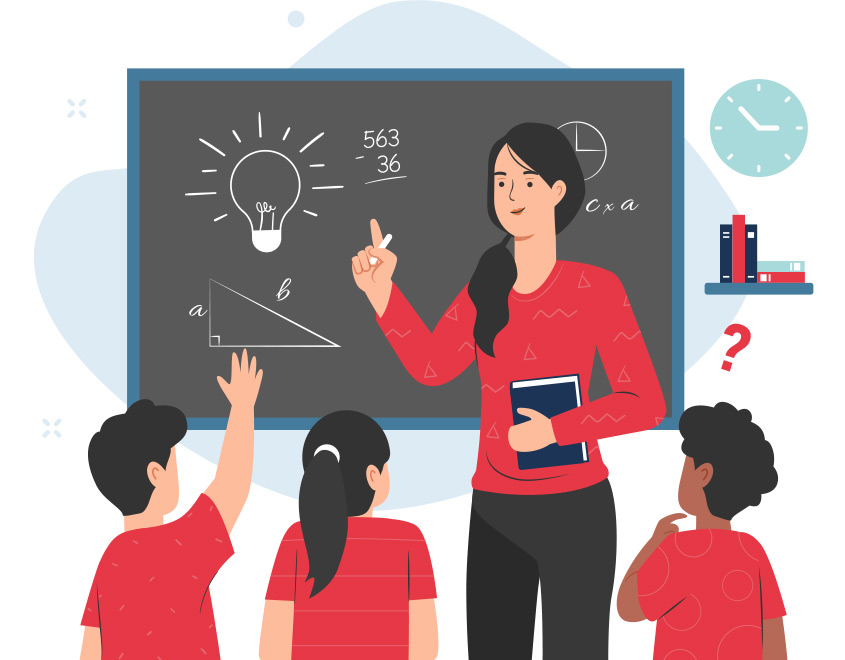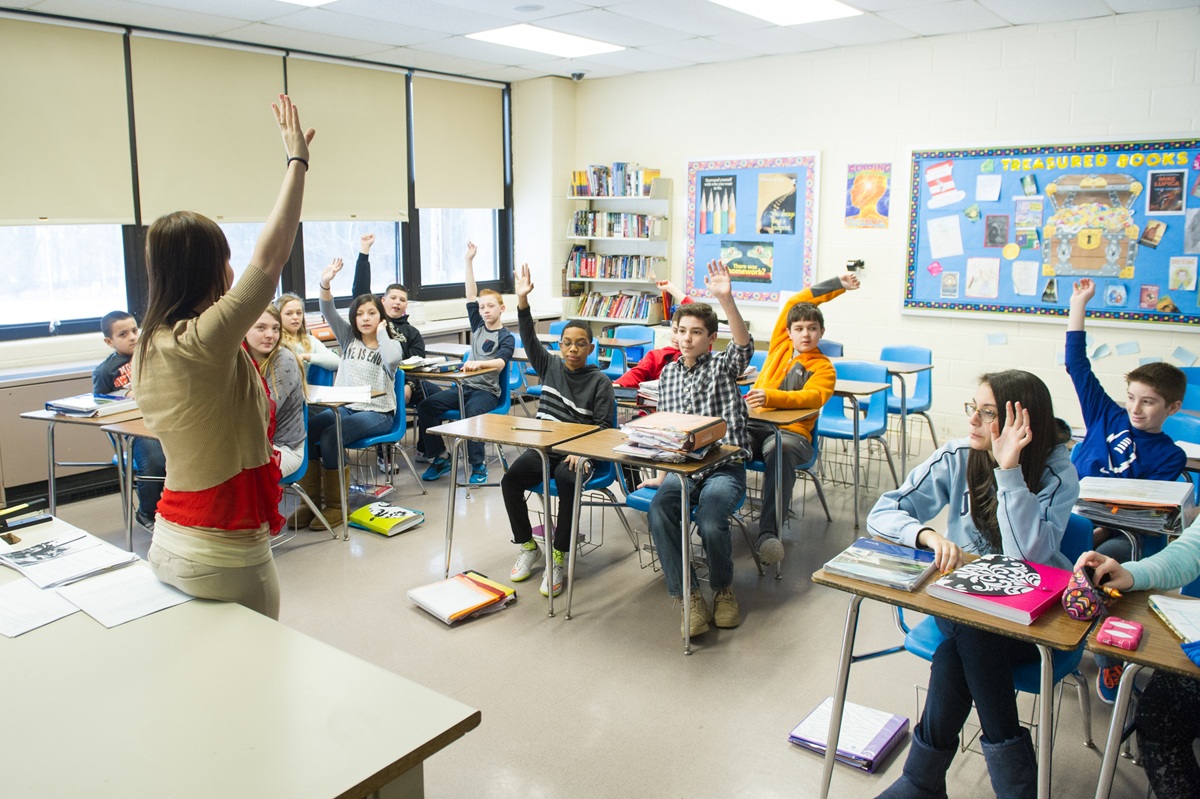Unlock Your Child’s Potential with Primary Science Tuition Singapore
Unlock Your Child’s Potential with Primary Science Tuition Singapore
Blog Article
A Comprehensive Guide to the Numerous Discovering Approaches in Main Scientific Research Instruction
The exploration of varied knowing methods in key science instruction provides an opportunity for teachers to enhance trainee engagement and comprehension significantly. By examining hands-on understanding techniques, inquiry-based techniques, and joint strategies, we can recognize efficient techniques that cater to numerous finding out styles.

Hands-On Knowing Methods
Hands-on discovering techniques play an essential role in key scientific research instruction, engaging students in active exploration and testing. These methods enable learners to communicate straight with sensations and materials, fostering a much deeper understanding of clinical principles. By utilizing manipulatives, models, and real-life experiments, instructors create an atmosphere where students can observe, hypothesize, and test their ideas.
Such strategies not only enhance comprehension however also cultivate essential thinking and analytical skills. When trainees participate in activities like developing straightforward makers, planting seeds, or conducting chain reactions, they are encouraged to ask questions and look for responses through their very own observations. This experiential strategy aids to debunk intricate scientific principles, making them a lot more relatable and accessible.
In addition, hands-on understanding promotes cooperation among peers, as students typically operate in teams to conduct experiments or share searchings for. This teamwork not only enriches their discovering experience but likewise develops essential social skills. Eventually, incorporating hands-on techniques in key science direction promotes a lifelong love of discovering and curiosity about the environment, laying a solid foundation for future academic quests in scientific research and past.
Inquiry-Based Understanding
Inquiry-based discovering is an instructional strategy that motivates trainees to ask inquiries, examine phenomena, and build their very own understanding of scientific principles. This approach changes the emphasis from typical teacher-led guideline to a more student-centered experience, where learners take the campaign in their educational trip. By cultivating inquisitiveness, inquiry-based learning advertises much deeper involvement with the product, allowing trainees to check out subjects in a significant context.
In practice, this technique commonly includes hands-on experiments, observations, and important thinking tasks that line up closely with the clinical technique. Students are encouraged to formulate theories, layout investigations, and assess data, which grows essential skills such as problem-solving and analytical thinking. The duty of the teacher in this framework is to facilitate expedition, assisting trainees through the inquiry procedure while urging independent thought and collaboration.
Furthermore, inquiry-based discovering supports a sense of possession over the understanding procedure, encouraging pupils to pursue understanding proactively. This method not only improves understanding of scientific concepts but also fosters a lifelong love for knowing, equipping trainees with the abilities essential to navigate a significantly complex globe.
Collaborative Knowing Approaches
Collective learning strategies equip students to take part in significant communications with peers, cultivating a shared responsibility for their instructional outcomes. In key scientific research guideline, these approaches encourage learners to collaborate to explore clinical ideas, fix issues, and carry out experiments (primary science tuition Singapore). By taking part in team activities, students can take advantage of diverse point of views, enabling richer understanding and retention of scientific knowledge
One trick aspect of joint learning is the emphasis on communication abilities. Pupils should verbalize their ideas, listen proactively to others, and negotiate ideas, every one of which are important proficiencies in both scholastic and real-world contexts. This social interaction not just enhances their understanding of clinical concepts however also promotes team effort and dispute resolution skills.
Additionally, collaborative discovering usually causes boosted inspiration and involvement. They are a lot more most likely to take possession of their understanding trip when trainees see the worth of their payments within a group. Educators can promote this procedure deliberately structured group tasks that align with educational program objectives while supplying advice on reliable collaboration methods. On the whole, incorporating collective understanding approaches in key scientific research guideline grows a vibrant discovering setting that prepares trainees for future academic and social challenges.
Modern Technology Integration in Science
The integration of modern technology in primary scientific research guideline enhances finding out experiences by supplying innovative devices and resources that sustain different training approaches, including joint learning - primary science tuition Singapore. The use of digital platforms, simulations, and interactive applications enables trainees to involve deeply with clinical principles, helping with a much more hands-on technique to discovering
Digital research laboratories, for example, allow learners to carry out experiments safely and effectively, promoting inquiry-based knowing. These tools can mimic real-world scientific scenarios, allowing trainees to imagine complicated processes that would be difficult to reproduce in a typical class setup. Moreover, innovation promotes communication and partnership amongst pupils, as they can share searchings for and work together on projects with on the internet platforms.
In addition, multimedia presentations and instructional videos can enrich lessons by satisfying diverse knowing designs, making abstract ideas more accessible. Information analysis devices likewise equip trainees to gather and analyze clinical information, strengthening important believing skills. On the whole, the calculated incorporation of technology in main science instruction not only enhances engagement yet also prepares trainees for a technologically sophisticated culture, furnishing them with essential skills for future clinical endeavors.
Differentiated Direction Approaches
Distinguished guideline strategies are vital for addressing the diverse requirements of students in primary science education and learning. These strategies allow instructors to customize their teaching methods to fit differing capacities, interests, and learning styles within the classroom. By utilizing separated guideline, educators can develop an inclusive environment that fosters interaction and improves understanding of clinical ideas.
One reliable technique is to use flexible grouping, which allows students to collaborate with peers at comparable ability degrees or with varying point of views. This strategy urges peer understanding and advertises essential reasoning. In addition, using options in tasks can equip students, enabling them to choose jobs that resonate with their passions while try this out still fulfilling curricular goals.
Additionally, incorporating tiered click now assignments is an additional beneficial method. Deliberately tasks with differing levels of complexity, instructors can make sure that all students are suitably tested, despite their proficiency. Making use of formative evaluations to evaluate recognizing additional enables educators to change their instructional techniques dynamically, guaranteeing that each student gets the assistance they require.
Ultimately, applying separated instruction methods in primary scientific research education not only improves trainee learning results but likewise grows an enthusiasm for scientific research, preparing students for future academic searches.

Verdict
In summary, effective main scientific research direction demands a diverse strategy that includes hands-on understanding, inquiry-based techniques, and collective strategies. The combination of modern technology and distinguished guideline even more deals with varied knowing designs, cultivating an environment helpful to expedition and critical reasoning. By applying these techniques, teachers can boost student interaction and understanding, inevitably nurturing a lifelong enthusiasm for scientific research and questions. Such thorough approaches are necessary for creating informed and curious future scientists.
The expedition of varied understanding approaches in key scientific research direction provides a chance for teachers to improve student engagement and comprehension significantly.Hands-on learning techniques play a pivotal duty in main science instruction, engaging pupils in energetic exploration and experimentation.Inquiry-based next discovering is a training method that encourages pupils to ask concerns, examine sensations, and build their own understanding of clinical ideas.Collaborative understanding techniques equip pupils to engage in meaningful interactions with peers, fostering a common obligation for their instructional results. Generally, including joint understanding strategies in primary science direction grows a vibrant knowing environment that prepares pupils for future academic and social challenges.
Report this page